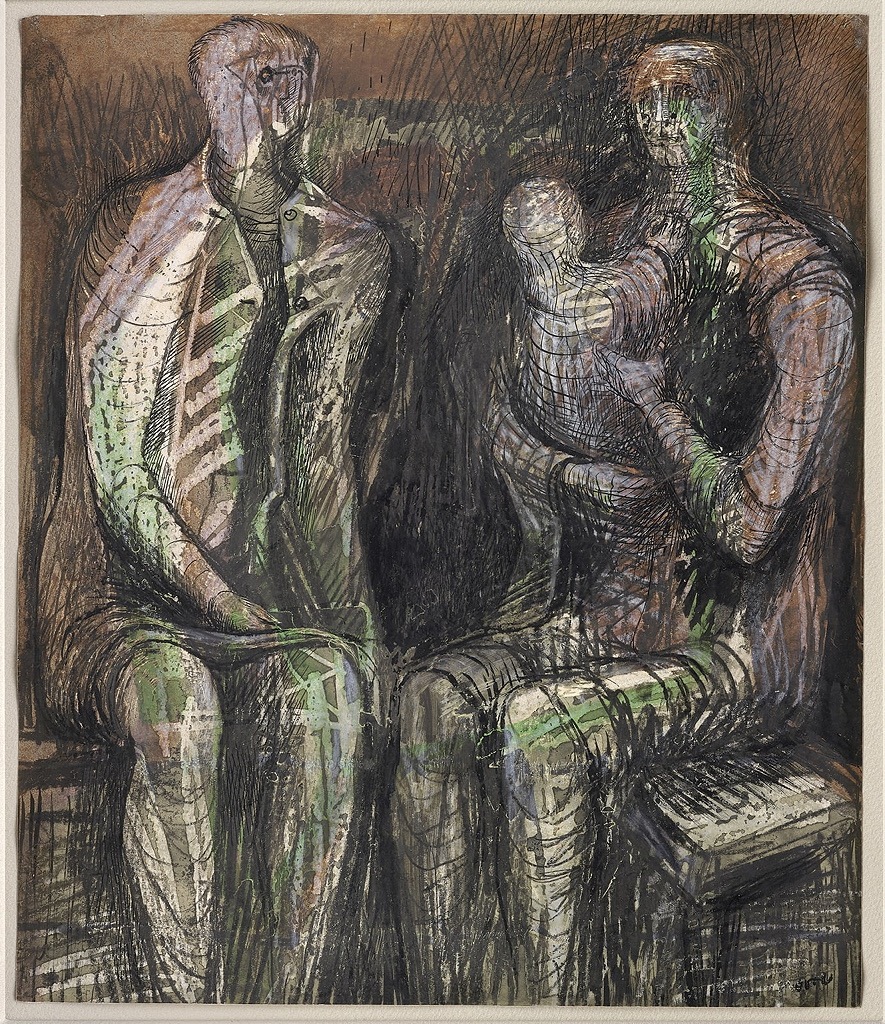Debasement

Henry Moore: SHELTERERS (c,1940-41)
"Masterpieces disappearing …"
I volunteered innocently, not knowing what I was agreeing to deliver. It was the first day of our Grand Refurbishment, the smoke hardly dispersing from the starting gun when Kurt Our Painter commented that we'd certainly need to remove the front hall baseboards to install the flooring. It would also, he insisted, be much easier to refinish that trim on saw horses than when it was nailed to the bottom of the walls. He set about separating those boards from their plaster-bound anchors. I followed along behind, pulling finishing nails two sizes to large out by their tails by means of the BIG F-ing Pliers. I explicitly agreed to take charge of those boards. I dutifully carted them out to the newly installed Pop-up Paint Shop in front of the garage and set to work refinishing them. That was the first batch. ©2021 by David A. Schmaltz - all rights reserved
Every room would have to lose their baseboards as part of their transformation. Seven rooms and the long upstairs hallway, each with different baseboards, would be stripped bare, with boards separately stored in or near the garage. I swear near the end, there were piles of boards everywhere. Somewhere along the way, we realized that those boards would look better if Joel Our Carpenter bullnosed their tops with a router, so another class of board resulted. We had freshly removed, unstripped boards, a few of which had shattered in removal and needed mending. We had stripped but not yet primed boards as well as primed ones. We had a few awaiting bullnozing. One batch, that first batch from the front entry hall, were primed and top-coated three times before they submitted to bullnosing, so they needed even more processing. One board was sixteen feet long. Another was six inches. One room's baseboard was made out of pressed cardboard or something, not even wood. The whole inventory hardly qualified as uniform.
The stripping would involve sanding for most, though some rooms had been painted with a seemingly rubber-based paint that turned to gum when sanded. Those, I cleaned up with the Silent Paint Remover®, my infrared tool which melts finishes, but even that left a gummy melted crayon substance I needed to scrape off the board surface. I figured an hour per board to clean off the old finish. I spent long hours in what might have appeared to have been abject debasement cleaning boards, bent over the low saw horses, pulling each board across my lap as I progressed ever so slowly. When sanding, I became covered in find dust. When cooking, I could at least listen to an audio book as I worked. Hours crept by.
I'd found it easy to defer the baseboard work in favor of refinishing doors. I'd pick away at the queue for a little variety over the following weeks. I used those front hall baseboards to cut my painting chops, removing three attempts after Kurt called me out for glopping on too much finish. I developed a technique of sorts which served me very well when repainting those doors. Doors now done, I'm down to making good on my original commitment, that one I so innocently made that first day of our adventure. Now, twelve full weeks later, I'm huddling over baseboards chilled by autumn weather, seasoned through a blistering summer, delivering on my promise. It is, I reflect, as baked off paint accumulates like dried leaves between my feet and my sleeves hold a thick flour-like dust covering, the most debasing work I've attempted since we started this effort. How could it be otherwise than that baseboards demand debasement to become refurbished? I'm getting even, though. Rather than wallowing in the lowliness of the work, I'm relishing this coda. I can apply everything I've learned through this whole damned Refurbishment: sanding, finish cooking, mending, priming, and proper finish painting, on pieces few visitors will ever notice. Masterpieces disappearing in the space between floor and ceiling.


